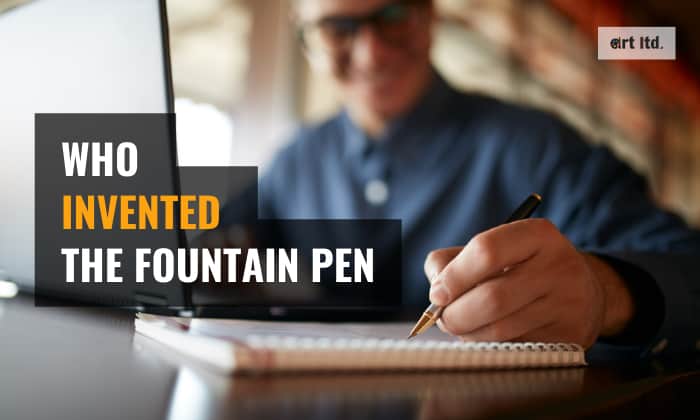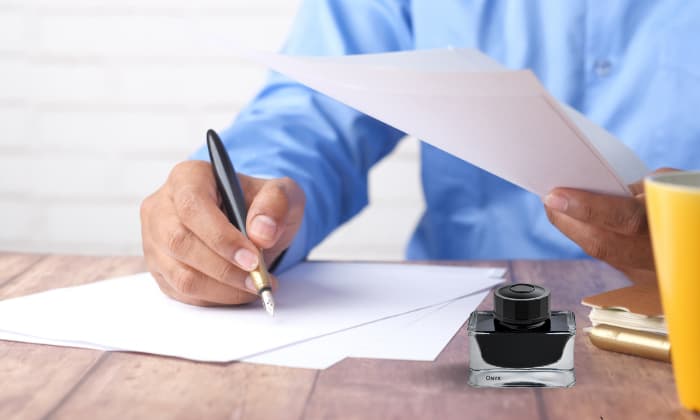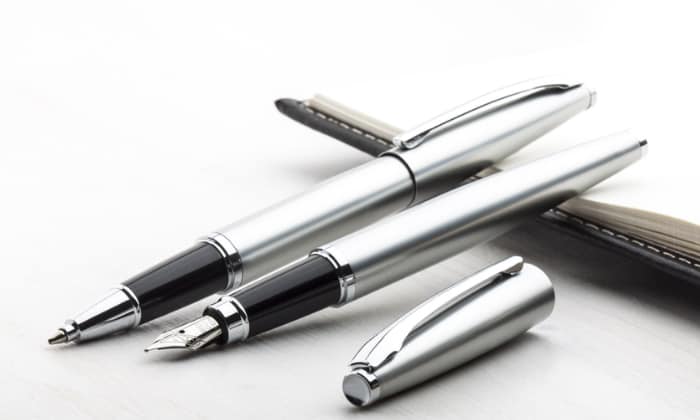The history of fountain pens is like a long and winding road. If you get to ask, who invented the fountain pen? Lewis Waterman would likely be the first person that would pop up, but that’s not the end of the story.
Before the famed inventor Waterman had it perfected, a series of other patents and innovations from multiple generations contributed to its success.
In this article, we will talk about these contributors and explore the rich ancestry of fountain pens.
Table of Contents
The First Fountain Pen
1. Fatimid of Egypt – 973
During the reign of the Fatimid Dynasty in Egypt, their ruler – Al-Mu’izz li-Din Allah – wished to have a writing instrument other than dip pens and quills, which would consistently get his hands messy. This desire led to the discovery of the first fountain pen.
2. Da Vinci of Italy – 15th Century
Leonardo da Vinci was a highly acclaimed painter, but he was also an engineer and an inventor who loved to document things through writing.
Portions of his notebooks showed writings that were recognized to be written using a fountain pen (or at least one with an ink reservoir). His journals also depicted the construction of a writing tool with the same mechanisms as fountain pens.
For that, he is considered one of the pioneers who made the fountain pen during the Great Renaissance.
3. Documentations from Europe – 17th Century
In 1636, a German inventor, Daniel Schwenter, wrote a comprehensive guide on how to make a pen “that holds ink” out of quills.
There were several documents and publications on the early type of fountain pen. Among these was Samuel Pepys’ documented diary narrating the moment he received a letter and a silver pen that carried ink from William Coventry on August 5, 1663.
The “La plume sans fin” was patented by Nicholas Bion in 1689. This fountain pen invention was later coined as the oldest pen that is still in circulation today. Its barrel was made of brass, featuring a quill nib and a screw cap.
4. First fountain pen – 19th Century
In May 1809, Frederick Fölsch successfully improved the previous fountain pen with a better ink feed.
By the mid-19th century, factories in Birmingham started mass-producing steel nibs so users could have replacements when their old ones rusted and corroded.
The Fountain Pen Era
Fountain pens did exist for some time, but there were no significant improvements until the 19th century. This marked the era of the fountain pen’s real evolution.
It started with the first fountain pen with a reservoir patent, officially issued to Frederick Bartholomew Folsch in May of 1809. The patent focused on how ink can stream down to the nib without squeezing or shaking the pen.
In the same year, another patent was issued to Joseph Bramah. His improvement was geared towards innovating the feeder. Apart from that, Bramah invented the first machine to mass-produce insertable quill nibs, leading to the invention of metal nibs.
In 1819, John Scheffer patented the first fountain pen version that was considered feasible for commercial production. Over a decade later, in 1832, Jacob Parker came up with a piston component that allowed the writing tool to “self-fill.”
By the mid 19th century, metal nibs were commercially available with the help of Bryan Donkin, John Mitchell. A manufacturing plant was established in Birmigham, distributing steel nibs so users can have replacements when their old ones rusted and corroded.
Modern Fountain Pens
With so many patents and modifications made, these pens have one common problem, they tend to be leaky and unstable. Ultimately, it was inventor Lewis Edson Waterman who discovered the solution to end this problem.
He teamed up with his brother, who was a chemist, to create an ink suitable for his pen. He also made a few revisions, like adding groves and slits to improve the air and ink passage.
It was the first design to utilize the adhesive force within the system called capillary action. This regulated the ink flow to eliminate or minimize the possibility of leaking. The design was patented in 1884.
From then, several filling mechanisms were invented. Here are some of the notable ones according to the chronological order of what year they were invented or patented.
- The self-filler with elastic tube by William B. Purvis in 1890.
- The crescent filler by Conklin was patented in 1901 and has been an iconic symbol since 1904.
- Patented around 1905, the button filler was released in 1913 by Parker Pen Company. It had an internal ink sac that could be manipulated with an external button.
- Walter Sheaffer’s lever filler. Instead of a button, it used a lever. This was patented in 1908 and debuted in 1912.
- Disposable ink cartridges made with glass and plastic were an instant hit in 1950.
The Impact of Fountain Pen Invention
Fountain pens were primarily invented in the quest of finding a mess-free writing instrument. More than that, the invention of fountain pens made writing more efficient as compared to using dip pens that require frequent dipping.
In addition, its invention was an important part of history that bridges the invention of more advanced and revolutionary writing implements, such as ballpoint pens and marker pens.
Changes of Fountain Pens Then and Now
1. Nib quality and material of construction
Fountain pens in the past were noticeably more toothy and less polished. Today’s generation of fountain pens have nibs that are made with strict quality control and modern machinery, which results in a smoother finish.
Old nibs were mostly made with easily corroded steel or overly soft pure gold. Modern nibs are corrosion-resistant and made with various metal combinations of gold alloys, titanium, stainless steel, and Iridium.
2. Ink flow
One clear difference between modern and older pens is the ink flow quality. Whereas pens made before 1884 have finicky ink flow and were prone to clogging, their modern counterparts boast a smooth writing experience.
Fountain Pen vs Dip Pen
Before fountain pens were invented, there were dip pens. The major differences between the two are the ink delivery system, ink type, and how they are designed.
Fountain pens pull ink from the ink reservoir down to the feed and the nib, while dip pens do not have an ink reservoir and have to be dipped in an ink bottle or ink well.
Each system is supported with different types of ink. Fountain pens use water-based ink with less viscous consistency to avoid clogging, while dip pens use thicker ones that are particle-binder-based in order to stick to the nib better.
Fountain pen designs are more sophisticated and complex, while dip pen designs are straightforward.
Frequently Asked Questions
Reasons why it is called a fountain pen
Prior to the invention of fountain pens, there were dip pens. After that, since the former carries its own ink reservoir and is self-supplying, you no longer have to dip it in the ink bottle. In other words, people came up with the fountain pen name because this writing tool had its own “fountain” of ink.
What is the oldest fountain pen until now? Who discovered it?
The oldest fountain pen is the La plume sans fin, commonly known as the M. Bion fountain pen. This was named after its creator Nicholas Bion.
When were pens invented? What country did it originate from?
The first pen was allegedly invented in Egypt around the 4th century. This ancient writing implement is called the reed pen.
Conclusion
In general, there is no single person to whom you can coin the ultimate answer to the question of who invented the fountain pen or who is the real inventor. It was a collective effort from different people and inventors from different parts of the world.
It all started with the ancient Egyptians then further conceptualized by Europeans and later polished by Americans.
In summary, the history of the fountain pen is very colorful and it continues to flourish as one of the most fascinating writing instruments in history.

Art has always been a part of my life; it influences my upbringing and later my career choice. For me, it is always a part of my parenting technique. So for whichever purpose that you come to art, you can start here with us.











